Who Is the Greek Goddess of Reason Intelligence and the Arts
Gustav Klimt – Pallas Athena (1898)
The ancient Greek goddess of wisdom glares powerfully out of Klimt's visionary fin de siecle masterpiece that mingles aboriginal mythology and modern psychology. In Klimt'due south Vienna, artists, writers and not to the lowest degree the doctor of dreams Sigmund Freud were fascinated by the ability of the unconscious and the magnetism of sexuality. Athena here is not so much a divinity of reason as a primitive archetype of female authorisation and force.
Sandro Botticelli – Pallas and the Centaur (c 1482)
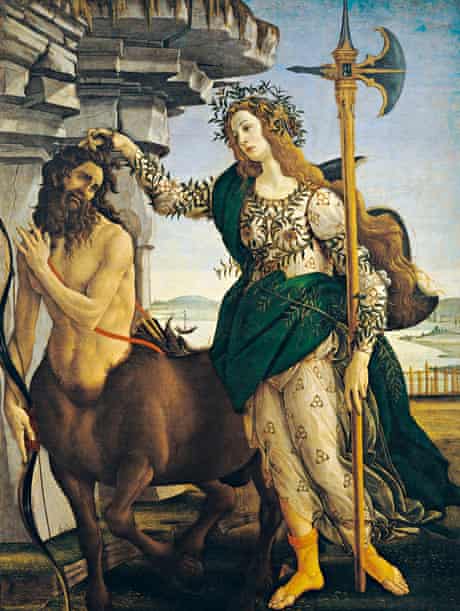
In this uncannily real painting that gives supernatural beings an incredibly solid presence as if observed from nature – note the disarming bring together betwixt the human and horse halves of the centaur: how did Botticelli work out this anatomical illusion? – the Greek goddess of wisdom grabs a male embodiment of unreason by its tangled hair. She disciplines the wild, unstable, hyper-masculine centaur in a vision of women saving the earth from male madness.
Bengal – Kali Strides over Shiva (19th century)
In this vivid artwork from 19th-century Bengal, the raging punitive Kali steps on the god Shiva. Kali is an angry and dangerous goddess born out of the forehead of the goddess Durga. Wearing a garland of the heads of demons she has eaten, she walks the world in fury. Only Shiva can stop her by assuasive himself to be trodden on.
Old Babylonian – The Queen of the Night (probably an image of Ishtar) (c 1800-1750 BC)
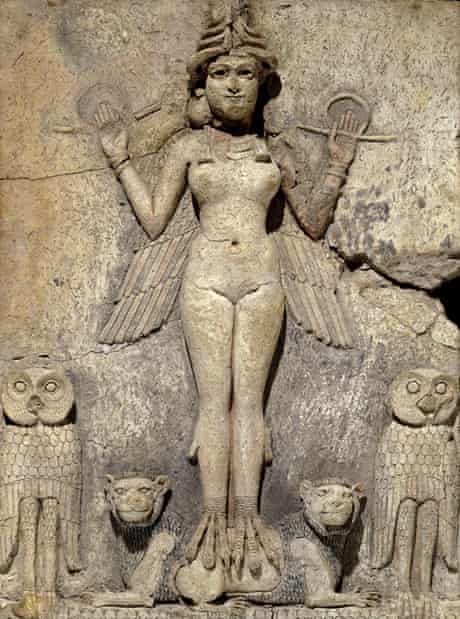
A real sense of power and magic emanates from this aboriginal Babylonian relief modelled in dirt. Raising her artillery and revealing her proud nudity, the winged effigy has a sexual majesty that suggests Ishtar, the Mesopotamian goddess of sexual activity and war – a dangerous combination – although the Mesopotamian pantheon also included other stiff female person divinities and demons. Women ruled the imaginations of the first farmers, it seems, equally they grew their wheat and queued for their beer rations.
Ice Age Europe – Venus of Willendorf (c 28,000 to 25,000 BC)
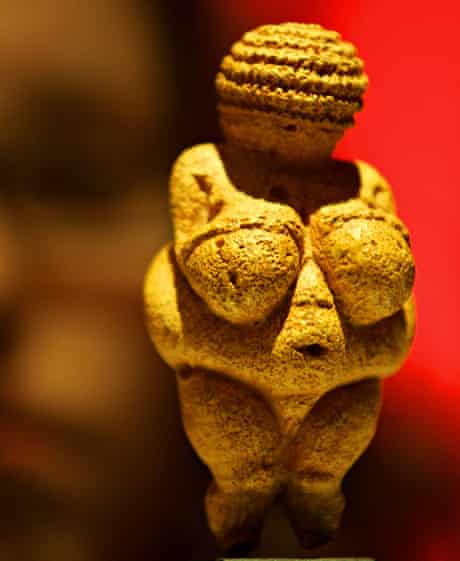
What are the bulbous, fantastical figurines of big-breasted women that have survived in the caves where human sapiens took shelter from the final Ice Age? The Venus of Willendorf is just the well-nigh famous of a type of sculpture that is among the very primeval substantial artistic creations. One strong possibility is that she is a fertility goddess. The ancient sculptors stressed reproductive and maternal aspects of these powerful little figures. Perhaps the artists themselves were women, creating totems of a matriarchal faith.
School of Fontainebleau – Diana the Huntress (c 1550-60)
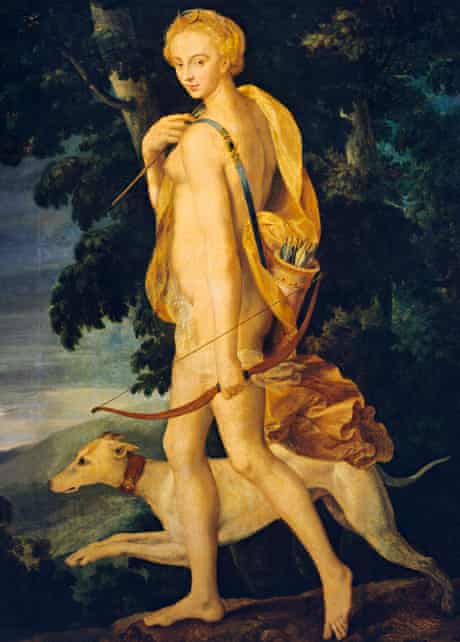
This painting of Diana, the virgin goddess of the hunt in Greco-Roman mythology, is besides an allegorical image of Diane de Poitiers, mistress of the French rex and a ability to be reckoned with in 16th-century French republic. When she became Henri Two's lover, she was 34 and he was 16. She held sway over him all his life. Artists of the French court at Fontainebleau helped create a cult of her every bit the goddess Diana, wise and innocent but dangerous to those who cantankerous her.
Pierre Mignard – The Marquise de Seignelay and Two of her Sons (1691)
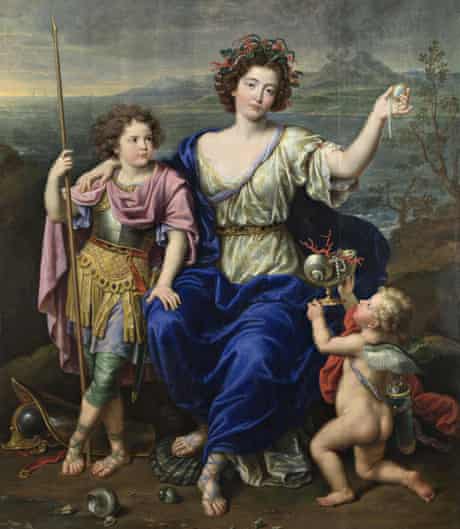
In this rollicking allegorical portrait the Marquise of Seignelay, one of the richest widows in 17th-century France, poses every bit the aquatic divinity Thetis from ancient Greek myth. In Homer's Iliad, the son of Thetis is the hero Achilles, and 1 of the Marquise'due south sons is dressed as a young Achilles. The corals and shells that decorate the painting symbolise the marine supernatural powers to which the Marquise de Seignelay lays claim in this grand classical boast.
Titian – Diana and Actaeon (1556-9)
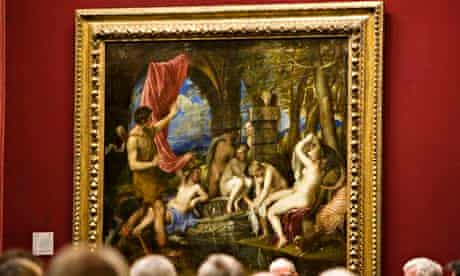
In Ovid's Metamorphoses, young Actaeon is out hunting ane twenty-four hour period when he chances on a grove where the goddess Diana is bathing. She punishes him for seeing her naked past turning him into a stag – and he is torn to pieces by his own hounds. Titian depicts the fatal exchange of looks when he sees her, and she him. In this moment of revelation, everything has a heightened beauty – not just the flesh of the very real women who pose equally Diana and her nymphs but water dancing from a fountain, the glimpsed sky and the trees all ravish the centre. For this beautiful moment, the goddess is about to exact a terrible price.
Rembrandt – Bellona (1633)
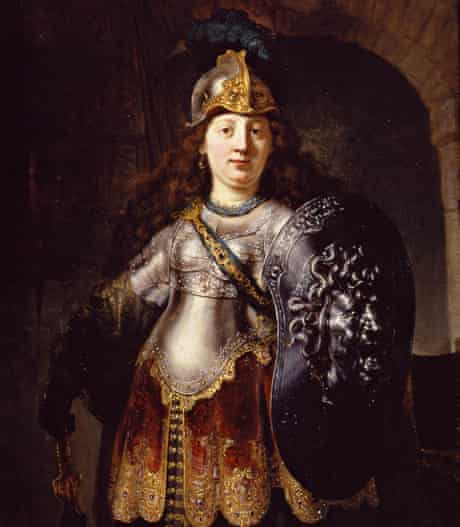
Bellona was a Roman goddess of state of war but Rembrandt portrays her as human, all too man. She looks rustic and unmartial inside her glistening armour, ill-suited to this metallic garb of state of war – only set to defend her country however. Like Rembrandt's painting The Nighttime Sentinel with its Dutch Dad's Army gathering, this down-to-earth portrait of a war goddess suggests that humble and unaristocratic every bit the Dutch are, they volition defend their world of everyday decencies with stubborn heroism.
Anthony van Dyck – Rachel de Ruvigny, Countess of Southampton, every bit Fortune (c 1638)
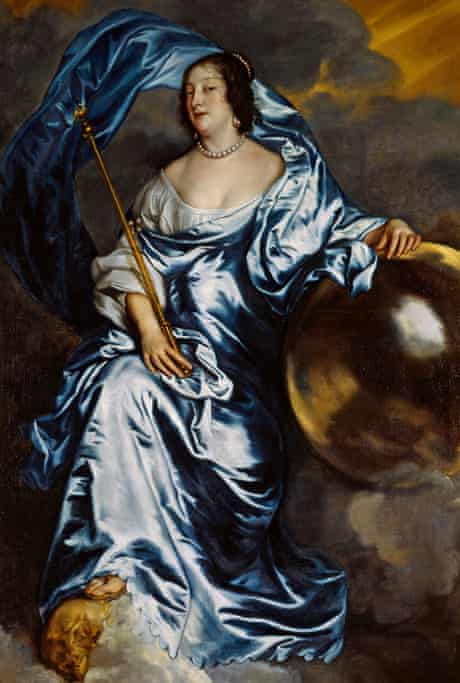
The goddess Fortune survived from antiquity through the middle ages because she symbolised and so vividly the ups and downs of business and wealth. Rachel de Ruvigny has become this lucky goddess. As Van Dyck makes all too clear in his cosmic shimmer of silver and sapphire, she is fortunate indeed, a woman of wealth and gustatory modality and, through the blessing of art, a divine power in her ain lifetime.
Source: https://www.theguardian.com/artanddesign/2014/may/20/top-10-goddesses-in-art-klimt-rembrandt-botticelli
0 Response to "Who Is the Greek Goddess of Reason Intelligence and the Arts"
Post a Comment